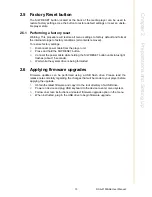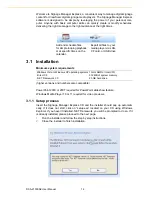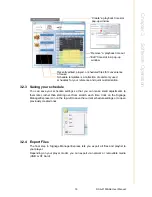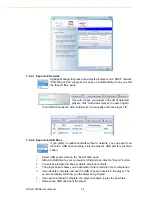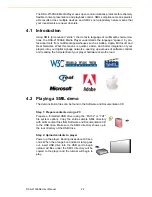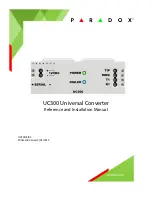
27
DSA-2130SAE User Manual
Appendix A
F
AQ
Why won’t some media files play at all?
Despite our best efforts to adhere to video format standards, video compression
introduces many variables, and sometimes the videos you acquire may not be play-
able on all players. In this case, you should check your compression settings (bitrate,
audio codec, and other parameters) and use a compatible setting.
If the files can play on your PC but not on your player, you should recompress the file
to ensure playback. For greatest compatibility, we recommend outputting to the WMV
format (VC-1 codec, 3 to 5 Mbps bit-rate). You can recompress unplayable video files
with recommended file formats and bit rates using the free and open source Hand-
brake tool at http://handbrake.fr/. Once you have found the right output settings for
size and quality, save them in Handbrake profiles for future use.
Then you can easily recompress any unplayable files you encounter in the future.
The media playback looks different on a PC compared to the media player’s
screen. (Wrong aspect ratio)
There are 2 major aspect ratios (width-to-height ratios) for video content, but many
kinds of displays. If you play 4:3 video on a 16:9 display (or vice versa), a circle
becomes oval, and the picture takes on a squeezed or stretched look. To avoid this
distorted look, adding black bars are a common technique.
The Network Media Player can be configured to automatically add black bars for cer-
tain types of displays. You can set the output resolution in the media player’s config-
uration menu to match the native resolution of your display.
Some JPEG images cannot be played in the media player.
Progressive JPEG are not supported. Please convert to baseline JPEG for maximum
compatibility.
JPEG images can be either of 2 types: baseline or progressive compression. Base-
line JPEG offers greatest compatibility, while progressive JPEGs are suitable for web
site images. Progressive images are downloaded and displayed “progressively,”
being rendered more clearly as more data is received over the internet. Devices with
local storage such as the CF/Network Media Player are usually incompatible with the
latter type. Make sure to save images as baseline JPEG in your photo editor, or
resave them as baseline JPEGs using free tools such as Paint.net (http://
www.paint.net/).
Does the media player support video streaming?
No, all media files are designed to play from local storage.
During content and schedule sync, contents are transferred to player’s local storage
before being presented on screen. This ensures the best possible presentation and
fluid delivery of your video message. Video streaming raises many playback quality
issues such as image freezing, blocking, or blue-screens, costing you valuable “air
time” and losing your audience's attention.
Содержание DSA-2130SAE
Страница 1: ...User Manual DSA 2130SAE ...
Страница 4: ...DSA 2130SAE User Manual iv ...
Страница 6: ...DSA 2130SAE User Manual vi ...
Страница 7: ...Chapter 1 1 Introduction ...
Страница 13: ...Chapter 2 2 Preparations and Setting Up ...
Страница 18: ...DSA 2130SAE User Manual 12 ...
Страница 20: ...DSA 2130SAE User Manual 14 ...
Страница 21: ...Chapter 3 3 Software Operation ...
Страница 27: ...Chapter 4 4 Working with SMIL ...
Страница 30: ...DSA 2130SAE User Manual 24 ...
Страница 31: ...Appendix A A FAQ ...
Страница 35: ...29 DSA 2130SAE User Manual Appendix A FAQ ...

